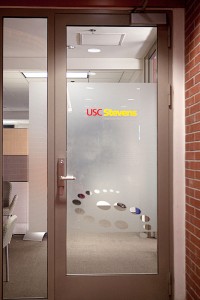
The Triangle Region of North Carolina has many, many assets that will almost ensure a perpetual place in the high tech innovation space. Some of these:
- The foresight to reserve land and build infrastructure 50 years ago in RTP
- The constant production of tech talent by our locally based institutions of higher education including our three R1 universities, NC Central, our independent Colleges and Universities, Wake Tech and Durham Tech.
- The diversity of our base — biotechnology, medical devices, technology infrastructure, decision analytics, health care, financial services IT–we are not beholden to any one industry and it somewhat blunts the effect of a downturn in any one area.
All this being said — we have moved into an environment where adoption of innovation is becoming more and more rapid. Think about how long it took for 50 million users to adopt the car, the radio, the television–think about how long it took for 50 million users to adopt the iPod, register for Facebook. What used to be country by country innovation is now global interconnected innovation. Countries, areas that show a penchant for bringing ideas to market and scale will out compete other areas of the world.



 Every now and then we hear the story of the
entrepreneur who left his or her steady job at a large company to follow
their dreams and create a startup, but we aren't all as daring and
brave to quit steady work, especially in a time of economic uncertainty.
If you have the entrepreneurial itch but aren't in a situation that
would allow you to sacrifice your day job, there are still ways you can
scratch said itch and bring innovation to a "startup" within a larger
company.
Every now and then we hear the story of the
entrepreneur who left his or her steady job at a large company to follow
their dreams and create a startup, but we aren't all as daring and
brave to quit steady work, especially in a time of economic uncertainty.
If you have the entrepreneurial itch but aren't in a situation that
would allow you to sacrifice your day job, there are still ways you can
scratch said itch and bring innovation to a "startup" within a larger
company.

 As the founding CEO and a Board member, who has remained on the Board
through its total history, I have been asked to serve as the Chairman of
the IP Board to lead the organization through this transition. The
Board will determine what the potential future role of IP could be in
Philadelphia. This evaluation will require significant dialogue and
outreach to all our partners and supporters, as well as patience.
As the founding CEO and a Board member, who has remained on the Board
through its total history, I have been asked to serve as the Chairman of
the IP Board to lead the organization through this transition. The
Board will determine what the potential future role of IP could be in
Philadelphia. This evaluation will require significant dialogue and
outreach to all our partners and supporters, as well as patience.
 As a business owner, I’ll bet you’re incredibly busy and find that there never seems to be enough hours in the day to complete all your work.
As a business owner, I’ll bet you’re incredibly busy and find that there never seems to be enough hours in the day to complete all your work.
 After seeing its first crop of 13 start-up companies raise funding
rounds, get bought by other companies or at least reach “
After seeing its first crop of 13 start-up companies raise funding
rounds, get bought by other companies or at least reach “ definition of bureaucracy. Perceived largely as a cost-plus, risk-averse business community, we have a job to do to convert a nation-leading $25 billion in research-and-development spending in this region into new innovation-based products, small businesses and jobs.
definition of bureaucracy. Perceived largely as a cost-plus, risk-averse business community, we have a job to do to convert a nation-leading $25 billion in research-and-development spending in this region into new innovation-based products, small businesses and jobs. Quality
Magazine
Quality
Magazine

 The elevator door opens. And there stands your ideal investor. It's the chance of a lifetime. But that chance only lasts as long as the elevator ride - you have less than a minute to make an impression. Hopefully, you've got a well-crafted elevator pitch ready to give.
The elevator door opens. And there stands your ideal investor. It's the chance of a lifetime. But that chance only lasts as long as the elevator ride - you have less than a minute to make an impression. Hopefully, you've got a well-crafted elevator pitch ready to give.
![[PHOTOGRAPH] James Kim [PHOTOGRAPH] James Kim](http://www.aaas.org/news/releases/2010/images/0309pyongyang_u.jpg) The first private university in North Korea, the decades-long dream
of an American businessman from Korea, has been completed and will
enroll its first students this spring, demonstrating the potential to
build a science-based relationship with a nation often perceived as
isolated.
The first private university in North Korea, the decades-long dream
of an American businessman from Korea, has been completed and will
enroll its first students this spring, demonstrating the potential to
build a science-based relationship with a nation often perceived as
isolated. The Denver Office of Cultural Affairs has hosted the
The Denver Office of Cultural Affairs has hosted the  Two vulcanologists published a paper in 2008 suggesting that as climate change continues, the next decades could see more volcanic activity in regions such as Iceland that are now under ice.
Two vulcanologists published a paper in 2008 suggesting that as climate change continues, the next decades could see more volcanic activity in regions such as Iceland that are now under ice.
 As I discussed yesterday, it looks like
As I discussed yesterday, it looks like 